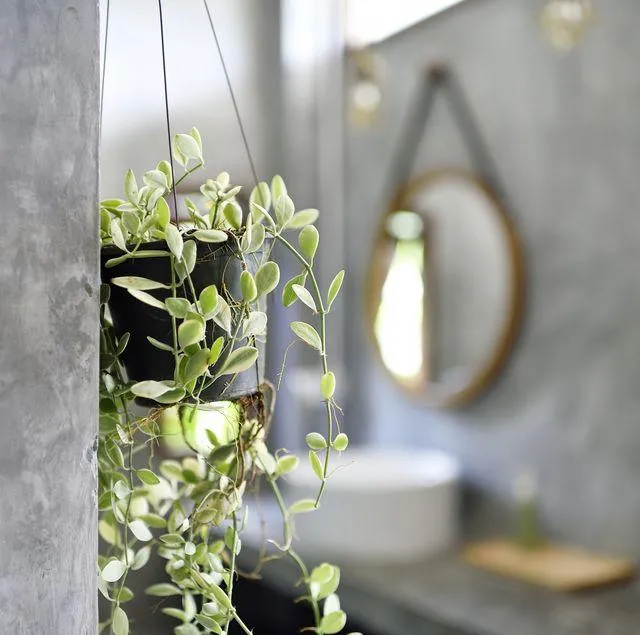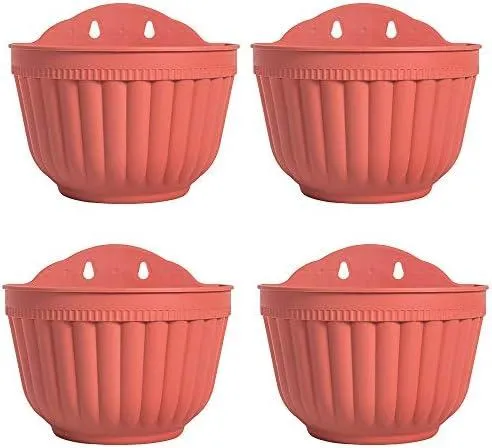A Detailed Guide to Cascading Houseplants
Cascading plants are a beautiful way to add lush greenery to any home. Also known as trailing or hanging plants, they derive their name from their ability to grow vertically downwards, spilling over the sides of pots, baskets or walls. With their long stems and aerial roots, cascading plants adapt well to hanging planters and hanging baskets. In this article, I’ll answer all your questions about caring for these flowery vines and provide planting tips from my experience as an avid gardener.
Popular Types of Cascading Plants
Some of the most commonly grown cascading plants include:
- English ivy – Known for its low maintenance and ability to thrive in low light. Great for covering walls. However, it can spread rapidly outdoors.
- Pothos or Devil’s ivy – Extremely hardy. I have seen it survive years of neglect! Comes in variegated white and green or solid green varieties.
- Swedish ivy – Similar to pothos but smaller leaves. One of the best for hanging baskets with its dense, bushy growth habit.
- Wandering Jew – Beautiful trailing vines with colorful leaves. Needs brighter light. Mine gets dusty easily so regular misting helps.
- Philodendron – Large varieties like Brazil and heartleaf philodendrons add a bold tropical look. May need support for heavy foliage.
Successful Planting of Cascading Plants
Proper planting is important for these vines to take hold and thrive long-term. Here are some key tips:
- Use a basket, hanging pot or wall planter suited to drainage. I avoid plastic that can retain too much moisture.
- Fill the container 3/4 full with well-draining potting soil. Add perlite or bark chips for extra drainage if needed.
- Gently loosen the roots of young plants before planting. This encourages new root growth according to plant experts.
- Secure support for vines that may get heavy like philodendrons using hooks, twine or plant ties. Speaking from experience, these plants need reinforced support over time as they grow larger.
- Water thoroughly after planting and make sure the soil doesn’t stay soggy. Cascading plants like continual moisture but not wet feet.
Caring for Cascading Houseplants
With a few basic care steps, your trailing vines will thrive for many years:

- Light: Most types need medium to bright, indirect light. English ivy tolerates low light best. Place near an east or west window to prevent weak growth.
- Water: Keep the soil lightly moist but not soggy or dry. Stick a finger in to check moisture levels. While semi-hardy ivy survives drought, most prefer continual moisture.
- Feeding: Use a balanced liquid houseplant food every 2-4 weeks in the spring and summer as directed. From experience, these vines really respond well to regular feeding.
- Pruning: Trim off leggy or tangled growth as needed to maintain shape and encourage fuller growth, like I do with my philodendron. Cut back to a node where leaves meet the stem.
- Repotting: Repot when roots fill the container by loosening the roots and sizing up to the next pot. Repotting every 1-2 years refreshes soil and prevents rootbound vines.
With some care, your cascading plants will reward you with lush, continuous growth for many seasons to come. But is patience key, as it takes vines a while to establish before they really start to take off and trail downwards.
Common Pests and Problems
Unlike some finicky houseplants, cascading vines are pretty low maintenance. But they can fall prey to occasional issues:
- Mealybugs: The tiny pests cause leaves to yellow and drop. Rubbing alcohol on a Q-tip dabbed on spots helps control according to garden books I’ve read.
- Spider mites: Appear as tiny spider webs and cause leaves to stipple or become dusty. Mist regularly to keep humidity up and check leaf undersides.
- Underwatering: Leaves may yellow and drop. This usually means it’s time for a thorough watering according to my experience.
- Overwatering: Can cause root rot, mushy brown roots and yellowing. Improve drainage and wait till soil partly dries between waterings.
Proper care and inspecting vines regularly makes it easy to catch and treat pests before they become severe problems. Has anyone else experienced issues with their trailing plants? Share your tips in the comments!
Using Cascading Plants in Home Décor
Trailing greenery brings elegant flair and visual interest to any room. Here are some creative ideas:

- Hang baskets of ivy, pothos or Swedish ivy from ceiling fixtures for a lush, jungle-lke ambience.
- Line a credenza, bookshelf or mantle with pots of philodendron or wandering Jew for an instant plant wall.
- Create a striking living wall by mounting trailing vines or ivy directly onto an empty wall space.
- Place pots of English ivy around doorways and windows to soften architectural lines.
- Add fullness to an arraignment on a side table by incorporating hanging vines.
With their versatility, cascading plants totally transform any space. Their flowy texture and colors add personality beyond ordinary decor. From my experience, these vines really bring nature inside.
Frequently Asked Questions
Here are answers to some common questions people have about cascading houseplants:
- How do I get vines to grow longer? Patience! Give them indirect light, keep moist and trim occasionally to encourage fuller growth from remaining nodes.
- Do trailing plants need support? Usually not unless they have heavy foliage like philodendrons. But add hooks or lightweight strings if you want to train growth downward.
- Can these plants survive low light? English ivy tolerates very low light best. Pothos and philodendron also adapt. But for lush growth, they prefer average indoor lighting.
- How do I revive a leggy vine? Cut stems back almost to soil level to encourage a fuller, bushier regrowth. Keep warm, moist soil and indirect bright light.
- Will ivy kill my walls? Not indoors! While aggressive outdoors, indoor ivy poses no threat if occasionally trimmed or kept in hanging pots.
Hope this guide helped provide all the answers lingering in your mind about cascading plants! Let me know if you have any other pressing questions. From my experience as an avid gardener, vines are such a rewarding indoor choice.
Choosing a Cascading Plant for Your Home
| Plant | Water Needs | Light Requirements | Ideal Location |
|---|---|---|---|
| Pothos | Low, let soil dry between waterings | Low to medium, tolerates low light | Any indoor spot, especially bathrooms |
| Philodendron | Medium, water when top inch of soil is dry | Low to bright indirect light | Any indoor spot, trailing varieties good for hanging baskets |
| Spider Plant | Low, let soil partially dry between waterings | Bright indirect light | Any indoor spot, trails or mounts well on poles |
| Swedish Ivy | Medium, water when top inch of soil is dry | Bright indirect light | Any indoor spot, good trailing or mounted variety |
| English Ivy | Medium, water when top inch of soil is dry | Low to medium light | Any indoor spot, good trailing or mounted variety |
FAQ
-
What are cascading plants?
Cascading plants are basically hanging plants that grow downwards. They need to be placed high up so their stems and leaves can grow long.

-
What are some common cascading plant varieties?
Some popular cascading plants include English ivy, pothos, spider plants,Swedish ivy, and tradescantia. My mom used to have an amazing wandering jew plant that hung down almost to the floor!
-
How do you care for cascading plants?
Cascading plants need generous watering to keep their long stems from drying out. You also gotta give them something high up to hand from, like a bookshelf or hanging basket. I always find myself overwatering my plants, so be careful not to drown the poor things. Maybe provide cascading plants with a moisture-retaining soil.
-
Are there any good indoor locations for cascading plants?
Stunning indoor spots for hanging plants include above windows, from the ceiling in a corner, or hanging on a wall near a bright light. You could even strap one to the kitchen cabinets for a splash of green. I once saw pictures of a living room with hanging plants stylistically arranged – it look absolutely amazing!
-
How do I encourage more growth from cascading plants?
To get your cascading plants really flourishing, give them ample sunshine. Some varieties like pothos can even tolerate low-light conditions. You could also trimmings to propagate more plants. Apparently, fertilizing every few months stimulates growth too. I wonder if talking to plants helps them as well?

-
What problems might cascading plants experience?
Unfortunately, cascading plants are prone to issues like underwatering, overwatering, and exposure to drafty conditions. Pests such as spider mites can also infest. However, aphids, scale and mealybugs fortunately seem less common on cascading varieties. If your plant is looking sad, check for signs of underwatering, overwatering, pests or not enough sun. A healthy plant is a happy plant!
-
How can I use cascading plants decoratively?
Get creative when styling hanging plants! Drape them over cabinets, hang in large pots on patio, or make a lush curtain with multiple cascading varieties. You could sort of “train” vines to grow in designs too. Outdoor cascading plants liven up porches wonderfully. All in all, hanging plants add life wherever they’re displayed.
